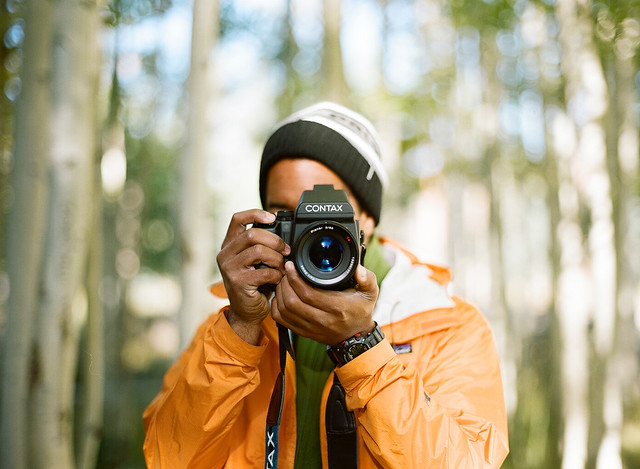Daniel Peña is in search of sight and sound
Tijuana-based photographer slows his roll and catches magical musical moments
The tactic is worlds away from digital photography, where a hundred shots are fired off in just a few seconds. It's not that Peña knocks
digital photography; he's just not into it. Still, he thinks the
massive uploading of digital photos to social sites like Instagram and
Facebook is a good thing.
Photo by Daniel Peña
"It
makes photographers like me work a little harder, you know?" he quietly
mumbles, strolling down a dusty Tijuana alleyway toward his home.
"Everybody has access to a camera now. That's why I'm trying to do
things a little differently."
The
25-year-old lives alone in an apartment in Mariposa, a live-work artist
enclave literally steps away from the United States-Mexico border
fence. Across the street is Casa del Túnel: Centro de Arte y Cultura
en Tijuana, the site of a former drug tunnel transformed into an art
gallery and event space that's currently operated by the Balboa
Park-based WorldBeat Cultural Center. Like countless photographers before him, Peña's
photographed the nearby white car riddled with bullets—a permanent art
installation that sits in front of Casa del Túnel. But because of his
use of film, his skill for capturing the right kind of light and his
penchant for leaving in unexpected surprises like flecks of dust on his
negative, the result is unique. In Peña's photo, the car looks like it's floating in thin air and the white specks on the print add to the ghostly effect.
"I
don't like to edit too much," he says. "I like to keep it what it is. I
don't like to turn it into a completely different image."
Photo by Daniel Peña
"They were like, 'What? Why would you go to Tijuana?'" he laughs.
But the work that's been appearing on his website and more frequently on his Tumblr blog since
his move answers his parents' question. The chaotic and colorful city
inspires him. Before the move, he used to cross regularly and wander
around Tijuana with a camera as his only companion.
On a recent Tuesday afternoon, Peña ventured out to add a few shots to his Sight & Sound series,
which features photos of street musicians that he shoots with film,
develops into prints then scans and posts to his website. Under each
photo, he includes a digital audio recording of the music being played
while he's shooting the photos. The added layer of audio has a unique
effect that's somehow more compelling and moving than if he were to
simply combine the two elements in video form.
"See, I think there's a guy by the bridge, but I can't tell," Peña says,
walking toward the border crossing and squinting into the bright
afternoon sun as he points at an underpass near the Sentri lane, where
people with cards and clearance line up for faster entry into the United
States. "Usually, street musicians are here when there's a long line of
cars. It's not too busy today, so we'll see."
Photo by Daniel Peña
Sure enough, in the shadow of the underpass sits a white-haired man with a beautiful handmade guitar. Peña uses his
workable Spanish and timidly asks the man for his permission to take
his photo and record some of his music using a small handheld digital
device. After Peña drops
some money into the guitar case, the man happily starts strumming. The
introverted photographer hangs back and starts by shooting from a
distance. He slowly works his way closer to his subject and, after a
handful of clicks, is eventually satisfied with his shots. He thanks the
man and moves on.
The
soulful singing of an old woman spills out from the center of Parque
Teniente Guerrero, a small community park in downtown Tijuana. People
fill the benches surrounding the gazebo in the middle of the park where
the woman performs. Again, Peña snaps
a few shots from afar and eventually works his way in and shoots a few
more before the old woman wraps up her set and hands the microphone to
the famed "El Muerto de Tijuana"
street performer, an old goth man whose original rock music laid over
electronic keyboard beats is clearly a crowd favorite. After a few
songs, Peña gets his shot and then sits back to take in the show.
"Things
are always changing, you know?" he says later as he navigates Tijuana's
bustling streets, trying hard to put the motivation behind his
analog-photography obsession into a few simple words. "Everything is
just a moment in history and then it's gone... I'm making it stand
still."



































